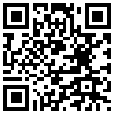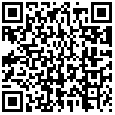Подробности
Свали Docx
Прочетете още
In this final episode, we will examine Ghana’s music, dance, and poetry. The traditional chiefs of the Akan people in southern Ghana have a special dance-drumming performance called “kete.” This ensemble is managed by the customary leaders and typically played at the funeral rites for Akan chiefs and in the inauguration of a new chief. Adowa dance is the most frequently performed social dance in the Akan region. Similar to kete, the dance was historically performed for funeral purposes. In modern times, it is often a part of various events, including traditional ceremonies for puberty, marriage, child naming, and traditional festivals. The youth of Ashanti enjoy participating in a recreational dance known as Sikyi. Sikyi is seen primarily at social gatherings where youth express themselves in courtship. The dance is characterized by movements of strutting and bobbing with theatrical elegance. For Ghanaian dance artists, every gesture and body movement contains a unique meaning. Dance in the Ghanaian society is more than an art form; it is the rhythmic heartbeat of the culture itself. The choreography is carefully composed to reflect cultural values, both personally and in the community. Dances also rejuvenate a sense of togetherness among the people of Ghana and allow citizens to convey their feelings on important social issues. Dr. Ephraim Amu is considered to be the father of Ghana’s art-music tradition. In the 1920s, he composed many hymns and patriotic songs in Ewe and Akan. His song, “Yen Ara Asaase Ni” (This is Our Own Land) has become Ghana’s second national anthem. Dr. Amu also stressed the importance of love and warned that gains in the eternal game of life are really of the least importance. Dr. Amu became the first contemporary musician to ever appear on a Ghanaian currency note. Nowadays, many Ghanaian musicians perform Highlife music. Characterized by jazzy horns and multiple guitars, Highlife combines the melodic and main rhythmic structures of traditional Akan music with Western instruments. Ghanaians developed this art form as an expression of their free spirit and human existence.














